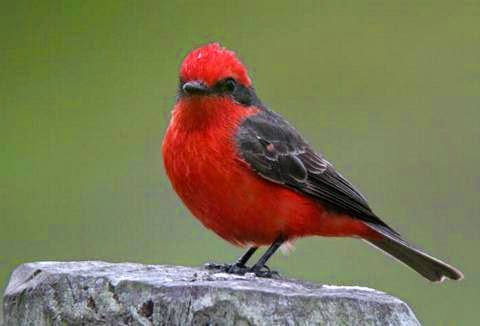Monarch
Flycatcher – song bird

Monarch
Flycatcher are small insectivorous songbirds with long tails. They inhabit
forest or woodland across sub-Saharan Africa, south-east Asia, Australia and a number of Pacific islands. Monarch
Flycatcher are mostly slim birds and posses board bills. The monarch
flycatchers have a mostly Old World distribution.
The majority of the family is
found in forest and woodland habitats.
The monarch flycatchers are generally monogamous, with the pair bonds from
just a single season to life. The nest is an open cup on a branch, fork or
twig. In some species the nests can be highly conspicuous.

Black-faced
Monarch flycatcher – has a distinctive black face that does not extend across
the eyes, gray upper parts wings and upper breast, contrasting with a rufous (
red-orange) belly. The dark eye has a thin black eye ring and a lighter area of
pale gray around it. Young birds are similar but lack the black face, have a
black bill and tend to have a brownish body and wings. Birds live in forest and
woodland-dwelling group of small insect-eating birds. The Black faced
Monarch
is found in rain-forests, eucalypt woodlands, coastal scrub and damp gullies. It
may be found in more open woodland when migrating. The Black-faced Monarch
forages for forages for insects among foliage, or catches flying insects on the
wing. Female builds the nest, but both sexes incubate the eggs and feed the
young. Flycatchers are songbirds that, as their name implies, feed mostly on
flies and other insects that are caught on the wing.

Flycatcher more denotes
ecological niche than natural relationship. Monarch Flycatchers or Monarchidae
, are a diverse group of birds of around 140 species that include boatbills,
shrike bills, paradise flycatchers, and magpie-larks. Most are forest birds
with a broad based bill and a slender shape.









No comments:
Post a Comment